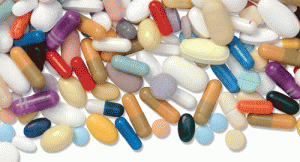 FX006 Meets Primary Endpoint for Knee OA*
FX006 Meets Primary Endpoint for Knee OA*
FX006 (Zilretta) is an intra-articular, non-opioid anti-inflammatory drug that has received a fast-track designation from FDA.1 This intra-articular sustained-release, injection employs proprietary microsphere technology combining triamcinolone acetonide (TCA) with the polymer poly lactic-co-glycolic acid to provide persistent drug concentrations locally and prolong the duration of pain relief.
In a recent Phase 3, placebo-controlled, active-comparator trial, patients were randomized to receive one of three treatments (1:1:1): a single 40 mg FX006 injection, placebo or 40 mg TCA immediate release injection. The primary study objective was to assess the magnitude of pain relief at Week 12 compared with placebo. The secondary objectives were to assess the magnitude and duration of pain relief and effect compared with placebo and immediate-release TCA.
FX006 met its primary endpoint at Week 12, demonstrating significant (P<0.0001), durable and clinically meaningful pain relief vs. placebo in patients (n=486) with moderate to severe knee osteoarthritis (OA) pain. Additionally, FX006 demonstrated statistically significant analgesia compared with placebo at Weeks 1–16, with active drug-treated patients obtaining an average of 50% pain reduction from baseline over Weeks 1–12. Additionally, FX006 achieved statistical significance on WOMAC A, B and C (pain, stiffness and function) through Week 12 compared with placebo and immediate-release TCA.
A New Drug Application submission is planned for the second half of this year.
Golimumab Improves Radiographic Progression in PsA Patients
A recently published study in Arthritis Care & Research outlined the long-term outcomes of patients who did and did not achieve minimal disease activity during the GO-REVEAL trial.2 These patients (n=405) had psoriatic arthritis (PsA) and participated in the trial for up to five years.
The GO-REVEAL trial was a Phase 3 randomized double-blind, placebo-controlled trial of golimumab for 24 weeks. After Week 24, patients received an open-label extension of subcutaneous golimumab injections of either 50 or 100 mg given once every four weeks for up to five years. Patients were allowed to continue their stable methotrexate dose. By Week 16, if there was less than a 10% improvement in a patient’s swollen and tender joint count, the patient dose was increased. Placebo-treated patients were increased to 50 mg golimumab every four weeks, and patients treated with 50 mg golimumab were increased to 100 mg golimumab every four weeks.
Of the 405 patients, 126 (31%) discontinued the study treatment by Week 252, mostly due to adverse events and disappointing therapeutic response. Patients who received golimumab vs. placebo at Week 14 (P<0.0001; 24% compared with 1%) and Week 24 (P<0.0001; 28% compared with 8%) had a significantly greater minimal disease activity attainment and a greater response. Baseline methotrexate use did not change these results. The Week 52 response was 42%, compared with 30% for placebo.

